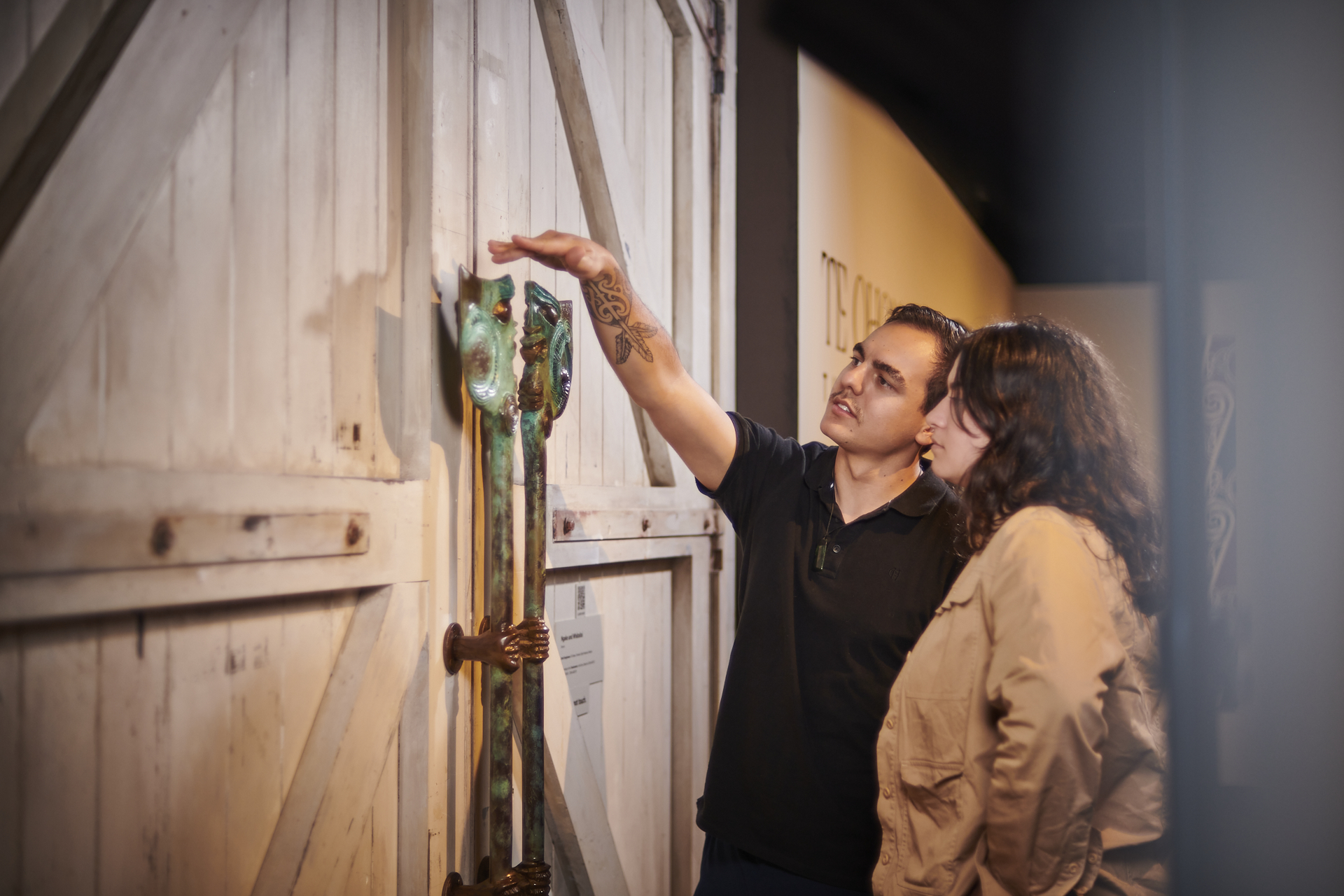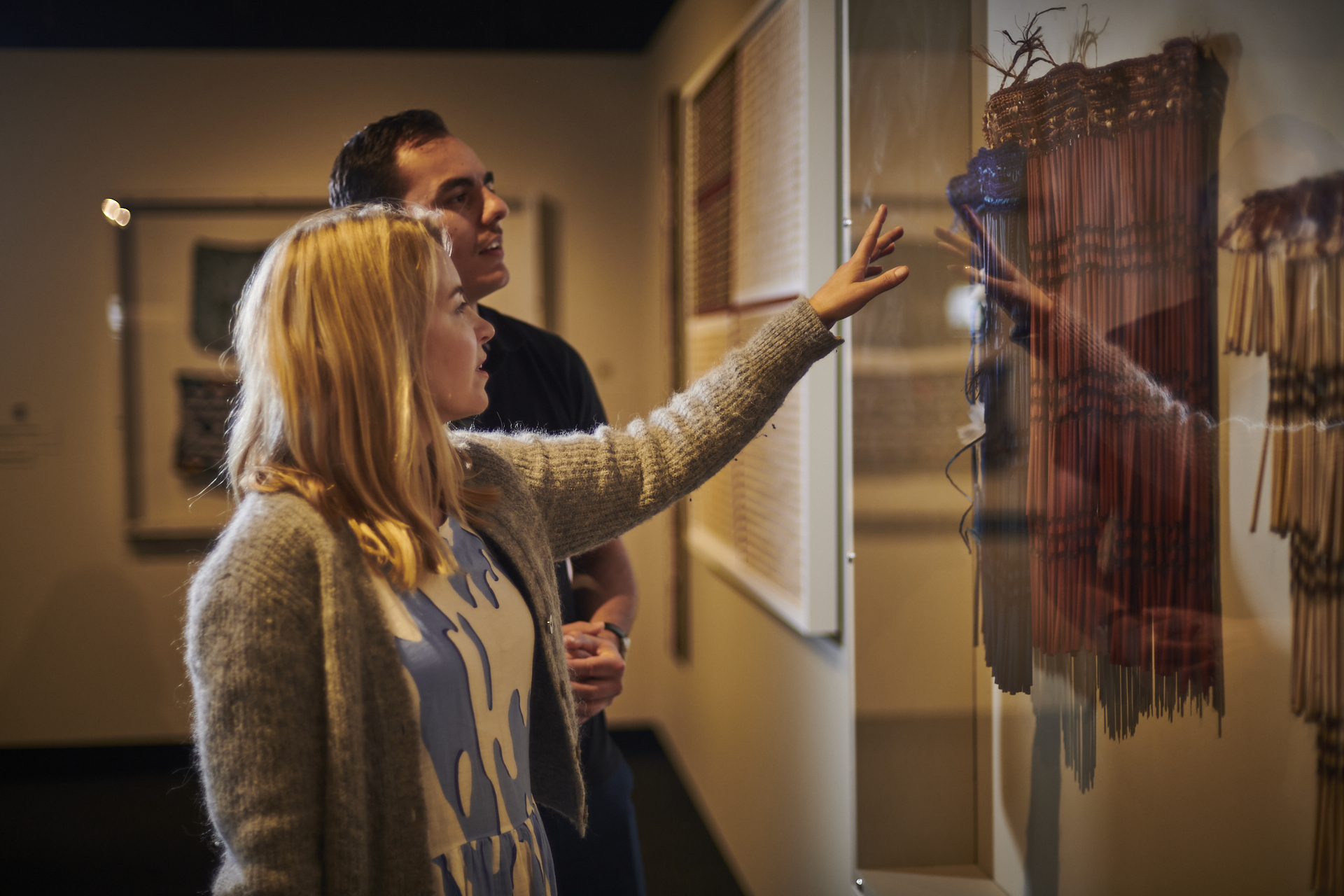Te Ohonga offers a significant awakening
By Ian Wards | 15 February, 2024
By Ian Wards | 15 February, 2024

Contemporary Māori artists from Te Upoko o te Ika a Māui are giving aroha to undocumented taonga in Te Ohonga: The Awakening, a new exhibition at Te Waka Huia o Ngā Taonga Tuku Iho Wellington Museum.
The process of developing the exhibition opened our eyes to the cultural value of taonga in our collection, and also to the respect, deep knowledge and skill exhibited by the artists who responded to them. I co-curated the show with Toi Māori Tātai Taura Dr Anna-Marie White (Te Ātiawa), the driving force behind the exhibition. Anna is incredibly passionate and knowledgeable about toi Māori and I was privileged to ride in her slipstream through the development of the exhibition.
This is a unique collaboration between Wellington Museum, Toi Māori Aotearoa and 19 contemporary artists and artist collectives working in Māori creative hubs throughout Te Upoko o te Ika (the Wellington region). The artists were invited to manaaki the taonga collected by the community minded, Martinborough-based businessman George Pain (1846-1937) throughout his life. His widow Mary donated these taonga to Wellington City Council in 1946, and they came into Wellington Museum’s collection in 2004.

Like many taonga collected by Pākehā in the late 19th /early 20th century, the history, stories and whakapapa of these taonga were not documented, leading to them sitting silently in our storage site for almost two decades. Museum staff, including myself, often feel frustrated that these histories were not recorded. This is partly a reflection of late 19th century Pākehā thinking, where taonga Māori were incorrectly perceived as curios, objet d’art or relics of a dying warrior race. The idea of keeping detailed records of their cultural use was probably not top of mind for George Pain.
More broadly, museums are products of late 18th century European imperial expansion. They were developed to showcase cultural and natural history material, following the scientific thinking of the time. Wellington Museum, being a relatively young museum, does not have too much imperial baggage, but we do have the George Pain collection to grapple with.
We are grateful to the artists who dedicated their time, passion and energy to this project, creating exquisite new works in a wide variety of media and practices, full of depth and meaning that awhi (support, embrace) these taonga. We filmed and interviewed many as they created their work, capturing the expert knowledge imbued in their artistry, their kōrero with the original makers of the taonga, and the insights they provided about the George Pain collection. You can see these poignant interviews, in the exhibition and on our website.
We opened the exhibition with an uplifting powhiri and later, over a cup of tea I heard that George Pain’s grandnephew Dennis Gibbs had come to the opening of his own accord. Dennis was overjoyed to see the care and respect being given to these taonga and to George Pain’s legacy, bringing the story full circle.